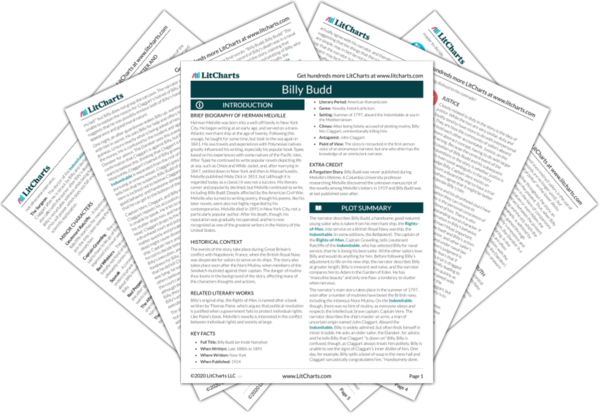Christian Imagery Quotes in Billy Budd
Billy in many respects was little more than a sort of upright barbarian, much such perhaps as Adam presumably might have been ere the urbane Serpent wriggled himself into his company.
Struck dead by an angel of God! Yet the angel must hang!
But in natural justice is nothing but the prisoner's overt act to be considered? How can we adjudge to summary and shameful death a fellow creature innocent before God, and whom we feel to be so?
Not that like children Billy was incapable of conceiving what death really is. No; but he was wholly without irrational fear of it, a fear more prevalent in highly civilized communities than those so-called barbarous ones which in all respects stand nearer to unadulterated Nature.
Marvel not that having been made acquainted with the young sailor's essential innocence...the worthy man lifted not a finger to avert the doom of such a martyr to martial discipline. So to do would not only have been as idle as invoking the desert, but would also have been an audacious transgression of the bounds of his function.

















